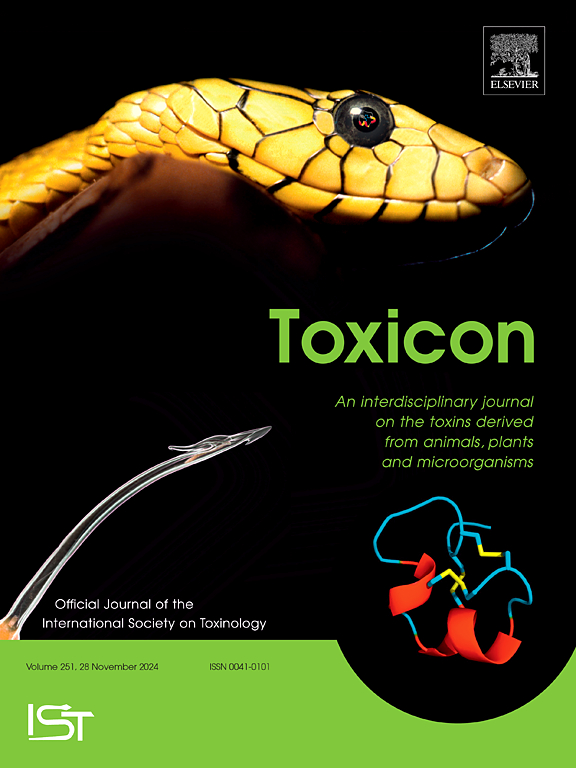Alleviation of LPS-induced acute lung injury by propolis-based nanocomposites through the TLR4/NFKB and P2X7/AKT pathways: Randomized-controlled experimental study
IF 2.6
4区 医学
Q2 PHARMACOLOGY & PHARMACY
引用次数: 0
Abstract
Sepsis-associated acute lung injury continues to pose a significant medical challenge with substantial morbidity and mortality rates. In this study, we investigated the therapeutic potential of propolis-based treatments and their nanocomposites in modulating inflammation and apoptosis using a lipopolysaccharide (LPS)-induced rat model of sepsis. Forty-two Sprague-Dawley rats were divided into seven groups (n = 6): control, LPS (5 mg/kg, i.p.), LPS + Propolis (100 mg/kg, i.p.), LPS + NanoPropolis (100 mg/kg, i.p.), LPS + silver nanoparticles propolis (AgNPsPro) (50 mg/kg), and a negative propolis group (100 mg/kg, i.p.). The rats were assessed for inflammatory, oxidative stress, and apoptotic markers through Western blot, histopathological analyses, and biochemical measurements. The LPS group exhibited significantly higher levels of pro-inflammatory cytokines (IL-1β, TNF-α) and the systemic infection marker presepsin (PRSN) in blood, as well as the oxidative stress marker malondialdehyde (MDA) in lung tissue. The treatment groups, particularly LPS + AgNPsPro, showed significant reductions in these markers, with decreased levels of MDA, IL-1β, TNF-α, NF-κB, and TLR4, and increased GSH content in lung tissue (p < 0.05). The anti-apoptotic protein BCL-2 was upregulated, while pro-apoptotic BAX expression was reduced, indicating enhanced cell survival. The P2X7 receptor, a key inflammation regulator, and the AKT signaling pathway, involved in cell survival, were positively modulated by the treatments. Histopathological findings corroborated these results, showing less lung tissue damage. In conclusion, propolis-based treatments, especially in combination with nanoparticles, demonstrate therapeutic potential in reducing inflammation, oxidative stress, and apoptosis in sepsis-induced lung injury.

蜂胶基纳米复合材料通过TLR4/NFKB和P2X7/AKT通路减轻lps诱导的脓毒症肺损伤
脓毒症相关的肺损伤仍然是一个重大的医学挑战,具有很高的发病率和死亡率。在这项研究中,我们利用脂多糖(LPS)诱导的脓毒症大鼠模型,研究了基于蜂胶的治疗方法及其纳米复合材料在调节炎症和细胞凋亡方面的治疗潜力。将42只Sprague-Dawley大鼠分为7组(n=6):对照组、LPS (5 mg/kg, i.p)、LPS+蜂胶(100 mg/kg, i.p)、LPS+纳米蜂胶(100 mg/kg, i.p)、LPS+银纳米蜂胶(AgNPsPro) (50 mg/kg)和蜂胶阴性组(100 mg/kg, i.p)。通过Western blot、组织病理学分析和生化测量评估大鼠的炎症、氧化应激和凋亡标志物。LPS组血液中促炎因子(IL-1β、TNF-α)和全身感染标志物presepsin (PRSN)水平显著升高,肺组织中氧化应激标志物丙二醛(MDA)水平显著升高。治疗组,尤其是LPS+AgNPsPro,显示出这些标志物的显著降低,MDA、IL-1β、TNF-α、NF-κB和TLR4水平降低,肺组织GSH含量增加(p
本文章由计算机程序翻译,如有差异,请以英文原文为准。
求助全文
约1分钟内获得全文
求助全文
来源期刊

Toxicon
医学-毒理学
CiteScore
4.80
自引率
10.70%
发文量
358
审稿时长
68 days
期刊介绍:
Toxicon has an open access mirror Toxicon: X, sharing the same aims and scope, editorial team, submission system and rigorous peer review. An introductory offer Toxicon: X - full waiver of the Open Access fee.
Toxicon''s "aims and scope" are to publish:
-articles containing the results of original research on problems related to toxins derived from animals, plants and microorganisms
-papers on novel findings related to the chemical, pharmacological, toxicological, and immunological properties of natural toxins
-molecular biological studies of toxins and other genes from poisonous and venomous organisms that advance understanding of the role or function of toxins
-clinical observations on poisoning and envenoming where a new therapeutic principle has been proposed or a decidedly superior clinical result has been obtained.
-material on the use of toxins as tools in studying biological processes and material on subjects related to venom and antivenom problems.
-articles on the translational application of toxins, for example as drugs and insecticides
-epidemiological studies on envenoming or poisoning, so long as they highlight a previously unrecognised medical problem or provide insight into the prevention or medical treatment of envenoming or poisoning. Retrospective surveys of hospital records, especially those lacking species identification, will not be considered for publication. Properly designed prospective community-based surveys are strongly encouraged.
-articles describing well-known activities of venoms, such as antibacterial, anticancer, and analgesic activities of arachnid venoms, without any attempt to define the mechanism of action or purify the active component, will not be considered for publication in Toxicon.
-review articles on problems related to toxinology.
To encourage the exchange of ideas, sections of the journal may be devoted to Short Communications, Letters to the Editor and activities of the affiliated societies.
 求助内容:
求助内容: 应助结果提醒方式:
应助结果提醒方式:


